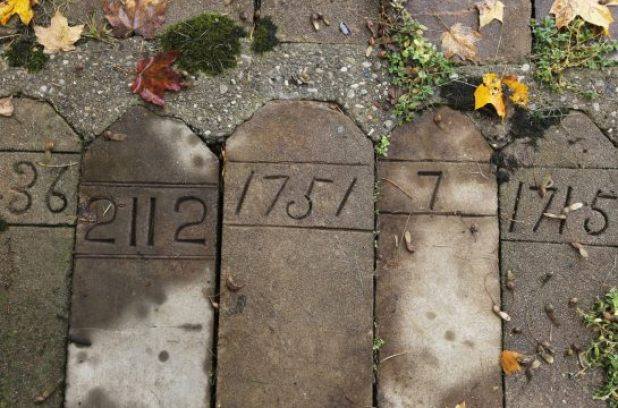Huronia’s Child 1751 lies unremembered no more: Map reveals unmarked grave

Many gravestones at Huronia Regional Centre were removed in the 1970s. The Star obtained a map that answered a crucial question about Child 1751.
By Marco Chown Oved andTim Alamenciak, Toronto Star
In the end, finding where Child 1751 lies buried took a map and a measuring tape.
This child’s final resting place is an unmarked patch of grass alongside hundreds of other anonymous grave plots at the shuttered Huronia Regional Centre, where people with intellectual disabilities were housed for more than a century.
The Star decided to find Child 1751 as a way to tell the story of one child among the thousands who stayed at the former Orillia Asylum for Idiots, some for their entire lives.
Many of those who died at the institution were buried with numbered markers to protect the privacy of their families. When the stones were removed to pave a path to a nearby group home sometime in the 1970s, the graves went from unnamed to unmarked altogether.
“That was very disrespectful. Whoever removed those markers didn’t care for the fact that someone was buried there,” said Debbie Vernon, a former employee of the institution.
Vernon, together with two Toronto Star reporters, used a map of the grounds obtained from the Ministry of Community and Social Services to figure out where Child 1751 was buried.
After locating two of the rare tombstones that actually bear a name, the group triangulated grave plot 1751, less than 15 metres away. The Star previously revealed that either of two residents may have been buried in grave 1751: Maurice Middlestadt, 8, or Lena Potts, 15, both of whom died in 1921. Thanks to shoddy record-keeping at the institution, it’s difficult to tell whose remains, in fact, occupy the grave.
Vernon, who worked at the centre during two periods in the 1970s and 1990s, stooped down, scraping away at the grass to see if there was any sign of the grave hidden in the tangle.
An Ontario Provincial Police building now looms over the graveyard, built on the grounds of the facility, which closed in 2009. Vernon described how a working farm once surrounded the cemetery, producing food for the institution.
When a resident died, there was no announcement or ceremony, she said. He or she simply stopped showing up to meals. If anyone asked about that person, others would simply say they had “gone farmside.”
In recent years, former residents brought a class-action lawsuit against the province, alleging they suffered sexual, emotional and physical abuse during their stay there. Last month, the province settled the suit on the eve of the trial, promising cash payments of up to $42,000 per surviving resident. That was a considered a victory, though some former residents were upset they wouldn’t have the opportunity to tell their stories in court.
The settlement, once formally approved, will include an official apology from the province and a pledge to release 65,000 documents that would have formed evidence in the case, including police reports, eyewitness accounts, internal government documents and letters from concerned parents.
The government will also maintain the cemetery, though it remains unclear whether the unmarked graves will ever be publicly identified.
“It would be my hope that people would be remembered by name and not by a number,” said Vernon. “Right now, they’re lost.”
The class-action suit is scheduled to be approved at a hearing Dec. 3.
